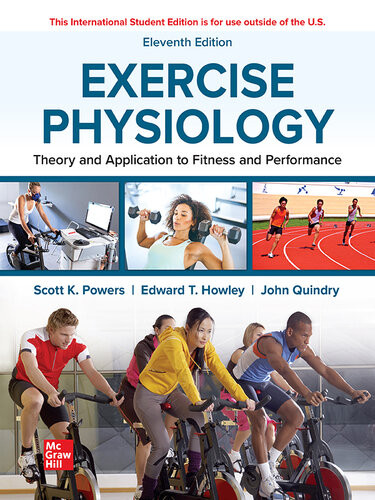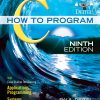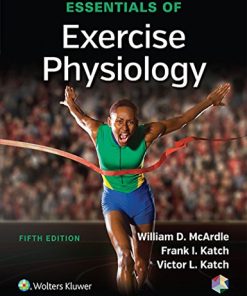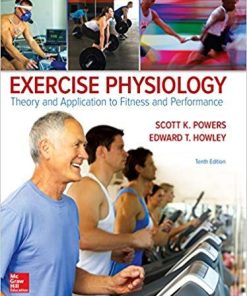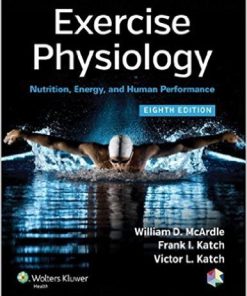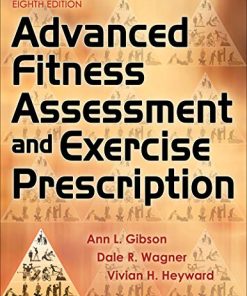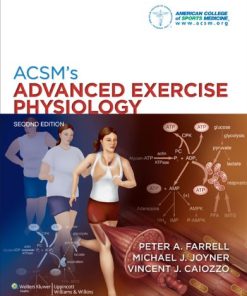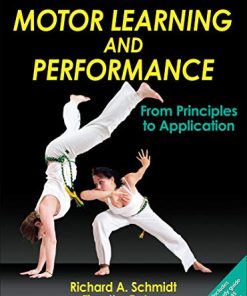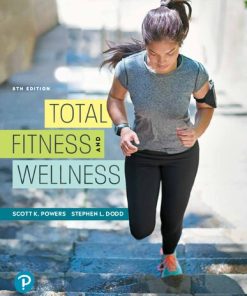Exercise Physiology: Theory and Application to Fitness and Performance; Eleventh Edition Scott K. Powers
$50.00 Original price was: $50.00.$25.00Current price is: $25.00.
Exercise Physiology: Theory and Application to Fitness and Performance; Eleventh Edition – Ebook Instant Download/Delivery ISBN(s): 9781260237764,1260237761

Product details:
- ISBN-10 : 1260237761
- ISBN-13 : 978-1260237764
- Author(s): Scott K. Powers, Edward T. Howley, John Quindry
Exercise Physiology: Theory and Application to Fitness and Performance is designed for students interested in exercise physiology, clinical exercise physiology, human performance, kinesiology/exercise science, physical therapy, and physical education. The text provides students with an up-to-date understanding of the physiology of exercise through the use of numerous clinical applications. The comprehensive text provides instructors with the freedom to select material that is the most important for their courses. The eleventh edition has undergone major revisions, with Dr. John Quindry bringing even more expertise to the author team.
McGraw-Hill Connect® is a subscription-based learning service accessible online through your personal computer or tablet. Choose this option if your instructor will require Connect to be used in the course.
Table contents:
Section 1 Physiology of Exercise
CHAPTER 0: Introduction to the Physiology of Exercise
CHAPTER 1: Common Measurements in Exercise Physiology
CHAPTER 2: Control of the Internal Environment
CHAPTER 3: Bioenergetics
CHAPTER 4: Exercise Metabolism
CHAPTER 5: Cell Signaling and the Hormonal Responses to Exercise
CHAPTER 6: Exercise and the Immune System
CHAPTER 7: The Nervous System: Structure and Control of Movement
CHAPTER 8: Skeletal Muscle: Structure and Function
CHAPTER 9: Circulatory Responses to Exercise
CHAPTER 10: Respiration during Exercise
CHAPTER 11: Acid-Base Balance during Exercise
CHAPTER 12: Temperature Regulation
CHAPTER 13: The Physiology of Training: Effects of aerobic and anaerobic training
CHAPTER 14: The Physiology of Resistance Training
Section 2 Physiology of Health and Fitness
CHAPTER 15: Physical Activity and Health
CHAPTER 16: Exercise Prescriptions for Health and Fitness
CHAPTER 17: Exercise for Special Populations
CHAPTER 18: Nutrition, body composition, and weight management
Section 3 Physiology of Performance
CHAPTER 19: Factors Affecting Performance
CHAPTER 20: Training for Performance
CHAPTER 21: Training for the Female Athlete, Children, Special Populations, and the Masters Athlete
CHAPTER 22: Nutrition, Body Composition, and Performance
CHAPTER 23: Exercise and the Environment
CHAPTER 24: Ergogenic Aids
Appendices
Appendix A: Calculation of Oxygen Uptake and Carbon Dioxide Production
Appendix B: Dietary Reference Intakes: Estimated Energy Requirements
Appendix C: Dietary Reference Intakes: Vitamins
Appendix D: Dietary Reference Intakes: Minerals and Elements
Appendix E: Percent Fat Estimate for Men: Sum of Triceps, Chest, and Subscapula Skinfolds
Appendix F: Percent Fat Estimate for Women: Sum of Triceps, Abdomen, and Suprailium Skinfolds
Appendix G: MET Equivalents for Exercise, Activities of Daily Loving, and Household Chores
People also search:
what is applied exercise physiology
exercise physiology explained
exercise physiology summary
exercise physiology companies
applied exercise physiology jobs
exercise physiology integrating theory and application pdf
exercise physiology integrating theory and application 3rd edition pdf
You may also like…
Social Science
Romance - Contemporary Romance
Uncategorized
eTextbook 978-1451191554 Exercise Physiology: Nutrition Energy and Human Performance 8th Edition
Medicine & Health Science
ACSM’s Advanced Exercise Physiology Second Edition, (Ebook PDF)
Uncategorized
Motor Learning and Performance: From Principles to Application 5th Edition – Ebook PDF Version
Relationships & Lifestyle - Exercise & Fitness


